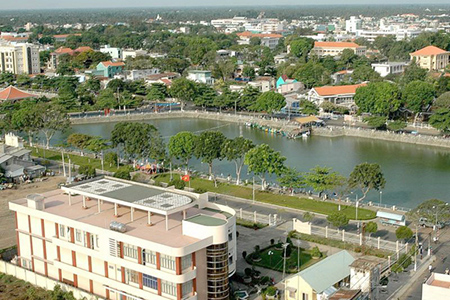Influence of Chinese civilization
Vietnamese culture has been deeply influenced by Chinese civilization, which came to Vietnam principally in two stages:...
Influence of Chinese civilization
Vietnamese culture has been deeply influenced by Chinese civilization, which came to Vietnam principally in two stages:
- 1st stage: Continual warfare and social upheavals during the period of the Warring Kingdoms (8th_3rd century B.C) caused many Chinese people to migrate to Vietnam. Thereafter, the Chin Emperor transported 50,000 poor Chinese inhabitants to Vietnam. These exiles brought into the
country their lifestyle and culture, including architecture, which were gradually adapted to the local conditions.

- 2nd stage: From 207 BC Vietnam was invaded and ruled by China for over 1,000 years, during which the Vietnamese people actually absorbed Chinese culture in all fields. Further elements of Chinese influence were witnessed in the 18th century and later (Qing dynasty) when new waves of Chinese refugees came to Vietnam, notably the Duong Ngan Dich group in My Tho province, the Tran Thuong Xuyen group in Bien Hoa province, and the Mac family in Ha Tien province.
Chinese culture exerted its impact on Vietnam in almost all fields: political, spiritual, cultural and social. With respect to architecture, Chinese influence is found in the following:
- The emergence of Chinese-type pagodas, palaces, farms and dwelling houses in Vietnam.
- Chinese architectural patterns were changed by Vietnamese to better suit their aesthetic tastes, the topography and landscape of the country. This means that ancient Vietnamese men creatively used Chinese models and patterns by taking due account of the specific local conditions.
- In the meantime, local architecture also saw advancements in terms of general composition, model, structure or decoration motifs.
Influence of Indian civilization
Whereas the influx of Chinese civilization was massive, impetuous and characterized by coercion, the introduction of Indian civilization, whether direct or indirect, was smooth and stable with steadily spreading influence.
Indian civilization exerted its direct influence on Vietnam mainly through Buddhism, starting in the early centuries of this era with the arrival of Indian monks who preached Buddhist precepts to the population (in Giao Chau during the 3rd, 6th and 9th centuries). During the 6th century, when another Buddhist school had not come as yet from China, 20 Buddhist pagodas were built in Luy Lau (Bac Ninh province nowadays) with over 500 Vietnamese monks; 16 Sutras were translated into the old Han language (official language in Vietnam at the time). Between the 18th and the 19th century, many Vietnamese Buddhist monks went to India to conduct research on Buddhism. Vietnam was indirectly exposed to Indian civilization through contacts with the Champa and Cambodian kingdoms over the centuries.

Influence of Western civilization
Vietnam's first contacts with the West took place in the 17th century when a small number of Portuguese, Dutch, British, French ships called at Vietnamese ports, bringing in traders as well as missionaries for preaching Christian doctrines.
By the late 18th century, a further influx of French influences was recorded with the activities of French Bishop Pigneau de Behaine and a number of his French colleagues.
From the end of the 19th century, with the establishment of French rule, French civilization assumed a dominant place in Vietnam and from then on Vietnamese architecture moved to a new stage wherein Western architecture played a key role in Vietnamese towns and cities, and Catholic churches became even part of the rural scenery in many places.



